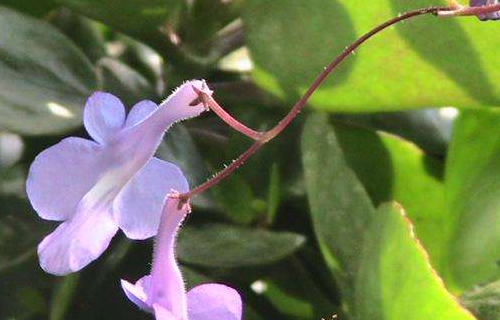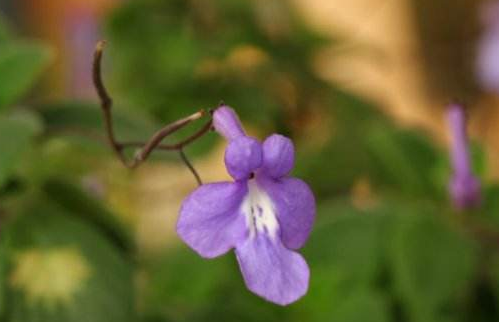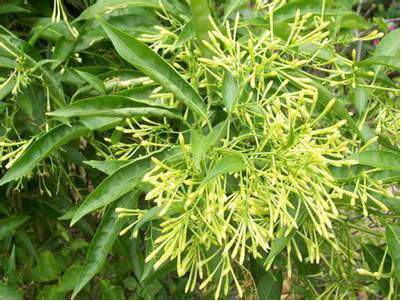Five kinds of plants which are not suitable for long-term indoor culture
1. Mandala is like an invisible killer. Don't keep it at home. The whole plant is poisonous, one is that the fruit and seeds are the most toxic, and the other is the tender leaves, even the air-dried leaves are toxic. Its flowers are also narcotic, can make people excited after accidental eating, and will appear hallucinations, excessive consumption can lead to nerve center damage, seriously life-threatening.

2. Yu Mei has a beautiful name and beautiful flowers, and its legend is even more mournful and moving, but the whole plant is poisonous. It belongs to the poppy family, in which the toxicity of the fruit is more serious, accidental eating will cause brain nerve dysfunction, serious will also endanger life and health.
3. In fact, the rose itself is not toxic, it is the excitant smell produced by its strong fragrance, which will cause respiratory infection, so it can not be cultivated indoors for a long time.
4. Rhododendron, also known as yellow rhododendron, its flowers contain a lot of toxins, do not easily smell and touch. Accidental ingestion, there will be poisoning, serious cases will cause toxic shock, harmful to human health.
5. Nocturnal incense is a special plant, which can be placed indoors during the day and moved outdoors at night. Nocturnal incense will release a lot of exhaust gas when there is no sun at night. Although the fragrance is to the nostrils, it is harmful to health. If you put it indoors for a long time, it will cause cough, dizziness, and even insomnia, asthma and so on.
Introduction of 10 kinds of potted plants that should not be cultivated for a long time or placed indoors!
Potted plants with colorful or green colors can not only beautify the home environment, but also purify the air and bring health to the family. However, the choice of indoor potted plants is also fastidious, some flowers are toxic, if long-term indoor breeding or display, may endanger the health of the family. The following is to introduce 10 plants that are not suitable for long-term breeding or placed indoors. Let's get to know them.
Photo: beauty Yu
I. the beauty of Yu
How many people were fascinated by Li Yu's song "Yu Beauty". In fact, Yu Mei is not only a brand name, but also a kind of flower. However, although the name of this flower is beautiful, it is toxic, and the whole plant is poisonous. Because Yumei belongs to the poppy family, the toxicity of the fruit is more serious, accidental eating will cause brain nerve dysfunction, serious will also endanger life and health.
Picture: mandala
II. Mandala
Mandala is like an invisible killer. Don't keep it at home. The whole plant is poisonous, one is that the fruit and seeds are the most toxic, and the other is the tender leaves, even the air-dried leaves are toxic. Its flowers are also narcotic, can make people excited after accidental eating, and will appear hallucinations, excessive consumption can lead to nerve center damage, seriously life-threatening.
Picture: oleander
Third, oleander
Oleander is toxic throughout the plant. The white juice it secretes will cause vomiting, loss of consciousness, diarrhea, respiratory disorders and other symptoms, which can endanger health and life in serious cases. Especially when burning oleander branches and leaves, the smoke produced is also highly toxic.
Picture: five-colored plum
Four, five-colored plum
Five-colored plum is cultivated in Guangdong, Hainan, Fujian, Taiwan, Guangxi and other South China, and belongs to wild flowers. The plant itself is non-toxic and harmless, but its flowers, leaves and immature fruits are poisonous, which can cause serious consequences if eaten by mistake, such as chronic liver poisoning, coma, vomiting, diarrhea, fever, jaundice, shortness of breath and other symptoms.
Picture: geraniums
5. Geranium
Geranium, also known as hydrangea, is the best flower to decorate the windowsill and corner, but the substance emitted by the geranium itself will cause skin itching after contact with the human body. If you accidentally eat the stems and leaves of Hydrangea, it will cause urgency, colic, diarrhea, breathing, vomiting, hematochezia and so on.
Picture: Narcissus
6. Narcissus
Daffodils have been cultivated and watched for more than a thousand years. Putting them indoors can make people feel warm and quiet. But its head (bulb) contains Lacodine toxin. Its flowers, branches and leaves are all poisonous. Splashing juice on the skin can make the skin red and swollen quickly. After poisoning, it will cause abdominal pain, nausea and vomiting. Its flower fragrance will also make people nervous system disorder, long-term inhalation of its aroma will be dizzy, inhaled more serious before going to bed.
Picture: poinsettia
Poinsettia
Poinsettia has a long flowering period, and its flowering time is just during Christmas and Spring Festival. Using it to decorate the room can increase the festive atmosphere, but it must not be placed indoors for a long time, because it will release toxic substances harmful to the human body. If the milk secreted by it comes into contact with the skin inadvertently, it will have an allergic reaction, which will make the skin red and swollen quickly, and if it is serious, it will appear ulcerative state; if it eats stems and leaves by mistake, it will cause abdominal pain, vomiting, and even fatal.
Picture: rose
Eighth, rose
In fact, the rose itself is not toxic, is its flower fragrance is too strong produced by the irritating smell, will cause respiratory infections, so it can not be cultivated indoors for a long time.
Photo: yellow rhododendron
9. Yellow rhododendron
Rhododendron, also known as yellow rhododendron, its flowers contain a lot of toxins, do not easily smell and touch. Accidental ingestion, there will be poisoning, serious cases will cause toxic shock, harmful to human health.
Picture: evening primrose
10. Evening incense
Nocturnal incense is a special plant, which can be placed indoors during the day and moved outside at night. Nocturnal incense will release a lot of exhaust gas when there is no sun at night. Although the fragrance is to the nostrils, it is harmful to health. If you put it indoors for a long time, it will cause cough, dizziness, and even insomnia, asthma and so on.
[editor's conclusion] the original intention of raising potted plants indoors is to green the environment and make the family healthier, but if you raise the wrong plants, the result may be counterproductive. The above introduces 10 kinds of potted plants that should not be cultivated for a long time or placed indoors. I hope they can help you!
Ten kinds of flowers which are not suitable for long-term breeding or display indoors.
Ten kinds of flower mandala which are not suitable for long-term breeding or display indoors
Mandala is like an invisible killer. Don't keep it at home. The whole plant is poisonous, one is that the fruit and seeds are the most toxic, and the other is the tender leaves, even the air-dried leaves are toxic. Its flowers are also narcotic, can make people excited after accidental eating, and will appear hallucinations, excessive consumption can lead to nerve center damage, seriously life-threatening.
Yu Meiren
Yu Mei has a beautiful name and beautiful flowers, and its legend is even more mournful and moving, but the whole plant is poisonous. It belongs to the poppy family, in which the toxicity of the fruit is more serious, accidental eating will cause brain nerve dysfunction, serious will also endanger life and health.
Oleander
Oleander is toxic throughout the plant. The white juice it secretes will cause vomiting, loss of consciousness, diarrhea, respiratory disorders and other symptoms, which can endanger health and life in serious cases. Especially when burning oleander branches and leaves, the smoke produced is also highly toxic.
Five-colored plum
Five-colored plum is cultivated in Guangdong, Hainan, Fujian, Taiwan, Guangxi and other South China, and belongs to wild flowers. The plant itself is non-toxic and harmless, but its flowers, leaves and immature fruits are poisonous, which can cause serious consequences if eaten by mistake, such as chronic liver poisoning, coma, vomiting, diarrhea, fever, jaundice, shortness of breath and other symptoms.
Geranium
Geranium, also known as hydrangea, is the best flower to decorate the windowsill and corner, but the substance emitted by the geranium itself will cause skin itching after contact with the human body. If you accidentally eat the stems and leaves of Hydrangea, it will cause urgency, colic, diarrhea, breathing, vomiting, hematochezia and so on.
Narcissus
Daffodils have been cultivated and watched for more than a thousand years. Putting them indoors can make people feel warm and quiet. But its head (stem) contains Lacodine toxin. Its flowers, branches and leaves are all poisonous. Splashing juice on the skin can make the skin red and swollen quickly. After poisoning, it will cause abdominal pain, nausea and vomiting. Its flower fragrance will also make people nervous system disorder, long-term inhalation of its aroma will be dizzy, inhaled more serious before going to bed.
Poinsettia
Poinsettia has a long flowering period, and its flowering time is just during Christmas and Spring Festival. Using it to decorate the room can increase the festive atmosphere, but it must not be placed indoors for a long time, because it will release toxic substances harmful to the human body. If the milk secreted by it comes into contact with the skin inadvertently, it will have an allergic reaction, which will make the skin red and swollen quickly, and if it is serious, it will appear ulcerative state; if it eats stems and leaves by mistake, it will cause abdominal pain, vomiting, and even fatal.
Rose
In fact, the rose itself is not toxic, is its flower fragrance is too strong produced by the irritating smell, will cause respiratory infections, so it can not be cultivated indoors for a long time.
Yellow rhododendron
Rhododendron, also known as yellow rhododendron, its flowers contain a lot of toxins, do not easily smell and touch. Accidental ingestion, there will be poisoning, serious cases will cause toxic shock, harmful to human health.
Night incense
Nocturnal incense is a special plant, which can be placed indoors during the day and moved outside at night. Nocturnal incense will release a lot of exhaust gas when there is no sun at night. Although the fragrance is to the nostrils, it is harmful to health. If you put it indoors for a long time, it will cause cough, dizziness, and even insomnia, asthma and so on.
In life, we see a variety of flowers, but no matter what kind of flowers, can not be raised in a closed space, especially in the bedroom. The toxicity of flowers and plants is the sense of self-protection, as the old saying goes: you can see from a distance, you can't play with it. We use our eyes to appreciate their beauty, not to hurt or pick them at will.
- Prev

Dolphin flower cultivation requirements
1. Choose a hanging basin, which can be tied to a thick water pipe or hung in the corner of the balcony for maintenance. This corner does not get sun in summer, but there will be two or three hours of direct sunlight in winter. Dolphin flowers like it very much. 2. Soil Dolphins don't have high requirements for soil. I have tried garden soil, culture soil and cheap peat soil.
- Next

Planting technology of night primrose
What are the technical points and precautions for planting night primrose? Let's take a look. First, soil selection night primrose likes slightly acidic soil, loose fertile, rich in organic matter is appropriate. If the soil is too alkaline, add ferrous sulfate or fermented rice washing water for acidification treatment
Related
- Fuxing push coffee new agricultural production and marketing class: lack of small-scale processing plants
- Jujube rice field leisure farm deep ploughing Yilan for five years to create a space for organic food and play
- Nongyu Farm-A trial of organic papaya for brave women with advanced technology
- Four points for attention in the prevention and control of diseases and insect pests of edible fungi
- How to add nutrient solution to Edible Fungi
- Is there any good way to control edible fungus mites?
- Open Inoculation Technology of Edible Fungi
- Is there any clever way to use fertilizer for edible fungus in winter?
- What agents are used to kill the pathogens of edible fungi in the mushroom shed?
- Rapid drying of Edible Fungi

